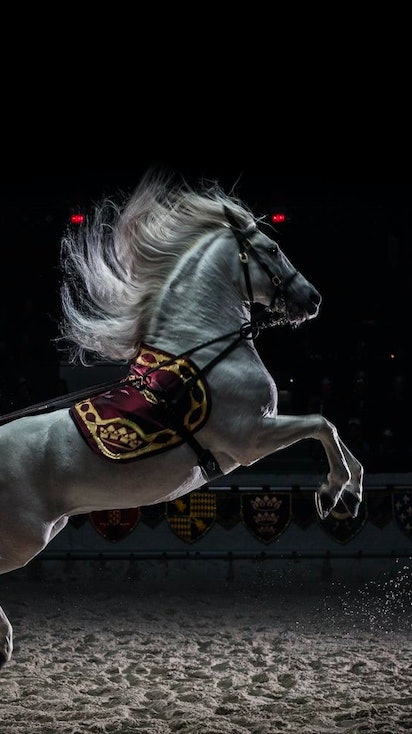Imagine riding through lush green meadows, the wind whipping through your hair as you gallop on the back of a majestic horse. It’s an exhilarating feeling, isn’t it? But did you know that horseback riding is not just a popular recreational activity, but also has deep roots in medieval times? In this article, we will explore the rich connection between horseback riding and the medieval era. From knights and jousting tournaments to the practicalities of transportation and warfare, horseback riding played a crucial role in the daily lives of people during this fascinating period in history. So saddle up and join us as we delve into the captivating world of horseback riding and its connection to medieval times.
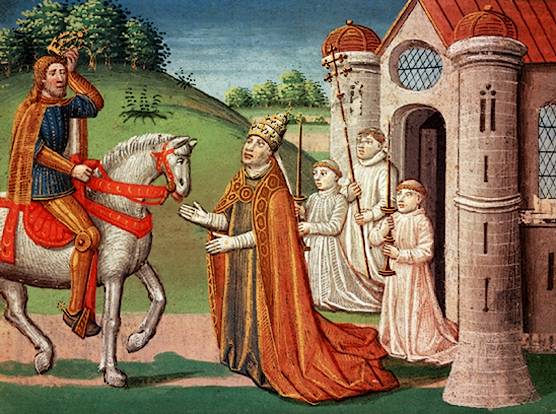
History of Horseback Riding
Origins of horseback riding
Horseback riding has a long and rich history that dates back thousands of years. The origins of this ancient practice can be traced back to the domestication of horses, which is believed to have taken place around 4000 BCE. This marked a significant milestone in human civilization, as it allowed for new forms of transportation, communication, and warfare.
The early horseback riders were likely nomadic tribes who recognized the potential of horses as a means of transportation. As they began to harness the power of these majestic animals, they discovered that they could cover large distances in a shorter amount of time and carry heavier loads. This newfound mobility had a profound impact on human society, enabling the expansion of trade routes and the establishment of new settlements.
The role of horses in medieval times
Horses played a vital role in medieval times across various aspects of life. They were the backbone of medieval warfare, as they provided knights with the speed, strength, and agility needed to excel on the battlefield. The introduction of the stirrup in the 8th century further revolutionized mounted combat, allowing knights to maintain their balance and deliver devastating blows with their weapons.
Beyond the battlefield, horses were essential for agriculture and transportation. They were used to plow fields, carry goods to market, and transport people over long distances. During this period, horses became indispensable companions for both commoners and nobility, shaping the social, economic, and cultural fabric of medieval society.
Noble knights and their horses
One of the most iconic images from medieval times is that of a knight on horseback. These noble warriors formed a special bond with their horses and relied on them for their success in battle. Knights considered their horses to be a reflection of their own status and prestige, often adorning them with elaborate armor and decorative trappings.
The selection of horses for knights was a rigorous process, with only the finest and most well-trained steeds deemed suitable for this honorable role. These horses, often of noble breeds such as the destrier or courser, were prized for their strength, endurance, and ability to perform precise maneuvers on the battlefield. The partnership between knight and horse was built on trust and mutual understanding, creating a formidable fighting force on the medieval stage.
Types of Horseback Riding
English riding
English riding, also known as classic riding, is a style that originated in Europe and is characterized by its emphasis on control, precision, and elegance. This style is most commonly associated with horseback riding in the United Kingdom, but it has gained popularity worldwide.
In English riding, riders sit with their backs straight and shoulders relaxed. The reins are held in both hands, allowing for fine control and communication with the horse. This style is often seen in formal equestrian events such as dressage, show jumping, and eventing.
Western riding
Western riding, on the other hand, is closely associated with the cowboy culture of North America. It originated from the practical needs of cowboys who herded cattle across vast plains and rugged terrains. This style emphasizes the rider’s ability to work with the horse and perform tasks such as roping, herding, and ranch work.
In Western riding, riders sit in a relaxed and comfortable position, with legs extended forward and reins held in one hand. This style is often associated with Western pleasure riding, rodeo events, and trail riding.
Dressage
Dressage is a highly disciplined form of horseback riding that focuses on the precise execution of a series of predetermined movements and exercises. It originated in ancient Greece as a method of training horses for military purposes and eventually evolved into a competitive sport.
Dressage requires riders to have precise control over their horses, as they must perform intricate movements such as collected and extended trot, piaffe, and passage. It is often referred to as “horse ballet” due to the grace and precision exhibited by both horse and rider.
Jumping
Jumping, also known as show jumping or stadium jumping, is a thrilling equestrian sport that involves horse and rider navigating a course of obstacles at speed. This style originated from the need for cavalry horses to be able to jump over obstacles in the field.
In jumping, riders must have good balance, timing, and coordination to guide their horses over obstacles such as fences, walls, and water jumps. This style is seen in competitive events such as the Olympic Games and attracts spectators with its exhilarating displays of athleticism and teamwork.
Skills and Techniques in Horseback Riding
Mounting and dismounting
Mounting and dismounting are fundamental skills in horseback riding. Proper technique ensures the safety and comfort of both the rider and the horse. When mounting, begin by standing on the left side of the horse and holding the reins in the left hand while grasping the saddle’s pommel with the right hand.
To mount, place your left foot in the stirrup and push yourself up and over the saddle, swinging your right leg over and settling into position. Use your right hand to adjust the stirrups to the desired length. When dismounting, bring the horse to a halt, remove your feet from the stirrups, and swing your right leg back over the horse, smoothly sliding down to the ground.
Holding the reins
Holding the reins correctly is crucial for effective communication with the horse. In English riding, the reins are held in both hands, with the left rein held between the pinky and ring finger, and the right rein held between the index and middle finger. The thumbs should rest on top of the reins, creating a light but firm grip.
In Western riding, the reins are held in one hand, with the excess rein looped and secured around the rider’s pinky finger. The hand should be relaxed and positioned just above the horse’s withers.
Basic riding positions
There are several basic riding positions that riders should master to ensure stability, balance, and harmony with the horse. These include the walk, trot, canter, and gallop. Each gait requires a different posture and technique to maintain control and to communicate effectively with the horse.
In the walk, the rider sits deep in the saddle and maintains a relaxed and balanced position. In the trot, the rider rises slightly out of the saddle and follows the rhythm of the horse’s diagonal footfalls. The canter requires the rider to sit deeply in the saddle while maintaining a steady rhythm. The gallop is the fastest gait, and the rider leans slightly forward to maintain balance and stability.
Using leg aids
Leg aids are essential in horseback riding, as they help the rider communicate with the horse and give directional cues. To use leg aids effectively, riders must develop an understanding of how to apply pressure and release it at the right moments.
To ask the horse to move forward, apply gentle pressure with both legs. To ask for a turn or change of direction, use the inside leg to apply pressure and the outside leg to support and guide the horse. A combination of leg aids and rein aids is used to achieve precise movements and transitions.
Maintaining balance and posture
Maintaining balance and posture is crucial in horseback riding, as it ensures the rider’s stability and allows for clear communication with the horse. Riders should sit tall, with their shoulders back and relaxed, and their core engaged.
The rider’s weight should be evenly distributed in the saddle, with heels down and legs relaxed and in close contact with the horse’s sides. Proper balance and posture not only enhance the rider’s effectiveness but also help prevent fatigue and discomfort during long rides.
Horses and Their Training
Horse breeds commonly used in horseback riding
Various horse breeds are commonly used in horseback riding, each with its own unique characteristics and suitability for different disciplines. Some popular breeds include the Thoroughbred, Arabian, Quarter Horse, and Warmblood.
Thoroughbreds are prized for their speed and agility, making them ideal for racing and jumping. Arabians are known for their endurance and elegance, often excelling in endurance rides and dressage.
Quarter Horses are versatile and athletic, making them well-suited for Western riding and ranch work. Warmbloods, such as the Hanoverian and Dutch Warmblood, are bred for their athleticism and are often seen in competitive dressage and jumping.
Training methods for horses
Training horses requires patience, consistency, and a clear understanding of equine behavior. There are various training methods and philosophies that trainers employ to develop a horse’s skills and abilities.
Some trainers utilize natural horsemanship techniques, which emphasize building a partnership with the horse based on trust and communication. Others may employ classical training methods, which focus on developing a horse’s strength, suppleness, and responsiveness through exercises such as circles, shoulder-ins, and flying changes.
Regardless of the training method used, a skilled trainer will work to establish clear boundaries, reward positive behavior, and gently correct unwanted behaviors to create a well-trained and obedient horse.
Building a bond with the horse
Building a strong bond with a horse is crucial for successful horseback riding. Horses are intelligent and sensitive creatures, and they respond well to kindness, consistency, and trust-building exercises.
Spending time with the horse, grooming, and providing treats can help create a positive association and build trust. Regular training sessions and positive reinforcement for desired behaviors also contribute to the development of a strong bond.
It is important for riders to approach their horse with patience, understanding, and respect to cultivate a deep connection that will benefit both horse and rider in their journey together.
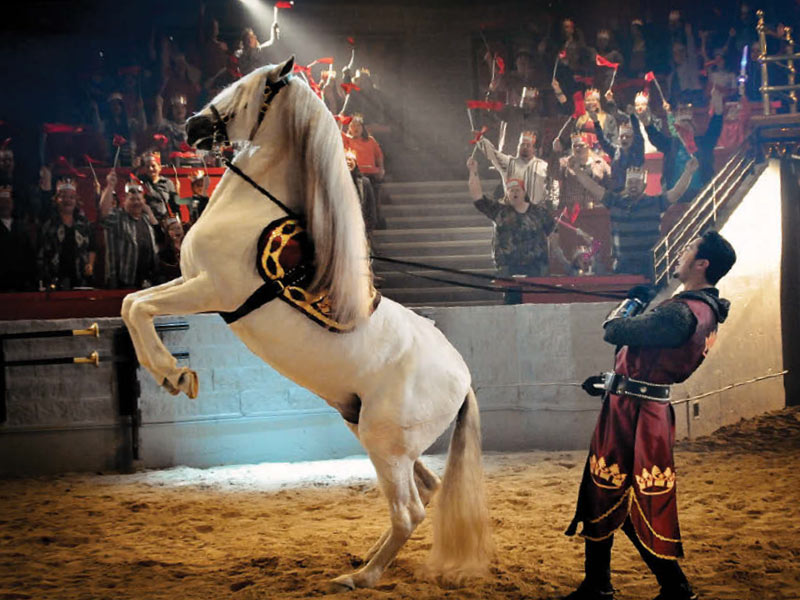
Equipment and Gear for Horseback Riding
Riding helmets
A riding helmet is a vital piece of equipment that should be worn by every rider, regardless of their experience level. It protects the rider’s head in case of a fall or accident and can help prevent serious head injuries.
When choosing a riding helmet, it is important to ensure that it fits properly and meets safety standards. Helmets should be snug but not too tight, cover the entire head, and have a secure chin strap. Riders should also regularly inspect their helmets for any signs of damage and replace them if necessary.
Saddles and stirrups
Saddles are designed to provide comfort and stability for both horse and rider. They come in various styles, such as English, Western, and endurance saddles, and should be carefully fitted to the horse’s back to prevent discomfort or injury.
Stirrups are attached to the saddle and provide a foothold for the rider. They come in different sizes and styles to suit the rider’s preferences and discipline. Proper stirrup length is important to maintain balance and allow the rider to communicate effectively with the horse.
Bridles and bits
Bridles are used to control and guide the horse. They consist of a headstall, noseband, and reins, and can be made from various materials such as leather, synthetic materials, or metal. The type of bridle used depends on the style of riding and the horse’s training level.
Bits are part of the bridle and are used to communicate with the horse through the rider’s hands. They come in different designs, such as snaffles, curb bits, and pelhams, each with its own purpose and level of severity. The choice of bit depends on the rider’s skill level and the horse’s sensitivity and responsiveness.
Protective gear for horse and rider
In addition to helmets, there is a range of protective gear available to ensure the safety of both horse and rider. Riding boots with a small heel provide stability and protection for the rider’s feet. Gloves can help with grip and prevent blisters and rubs.
For the horse, protective gear such as leg wraps or boots can provide support and prevent injuries during strenuous activities or jumping. Additionally, saddle pads and blankets can help distribute weight and provide cushioning for the horse’s back.
It is important for riders to invest in high-quality protective gear and regularly inspect and replace any damaged or worn-out equipment to ensure the utmost safety while horseback riding.
Roles of Horses in Medieval Times
War horses and their significance
In medieval times, war horses played a crucial role in battle, carrying armored knights into combat and providing them with speed, power, and mobility. They were bred for strength and endurance, and their training involved teaching them to remain calm and responsive in the chaos of battle.
War horses were protected by armor, known as barding, to provide additional protection against enemy attacks. These horses were trained to perform complex maneuvers, such as charging at the enemy, rearing on command, and trampling fallen adversaries. Their size and strength made them formidable weapons on the battlefield.
Horses in agriculture and transportation
Horses played a vital role in agriculture and transportation during medieval times. They were used to plow fields, transport goods and people, and pull heavy loads. Their strength and endurance made them indispensable in these tasks, and their use greatly increased productivity in farming and commerce.
Riding on horseback also provided a faster and more efficient mode of transportation than walking or using carts or wagons. Horses could cover long distances more quickly, enabling the expansion of trade routes, the delivery of important messages, and the establishment of new settlements.
Horses in jousting tournaments
Jousting tournaments were popular spectacles in medieval times, where knights showcased their skills and prowess in combat. Horses played a significant role in these events, as they were the means by which knights engaged in the tournament.
Jousting horses, known as chargers, were trained extensively for these competitions. They had to be agile, responsive, and fearless in the face of charging opponents and swinging lances. Jousting tournaments not only displayed the horsemanship and fighting skills of knights but also celebrated the bond between knight and horse.
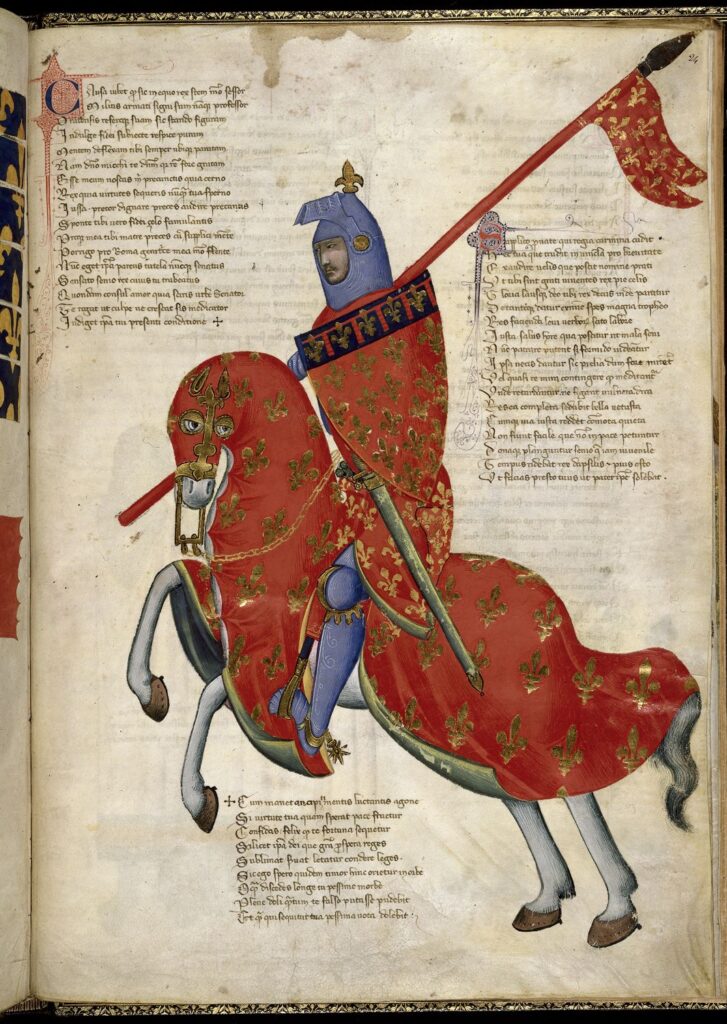
Famous Medieval Knights and Their Horses
King Arthur and his horse, Excalibur
King Arthur, the legendary figure of Arthurian legend, is often depicted in medieval literature and art riding a powerful and majestic horse named Excalibur.
Excalibur was said to be a magical horse with incredible speed and stamina, capable of carrying King Arthur on his numerous quests and battles. He symbolized the king’s power, bravery, and nobility, serving as a faithful companion in the quest for justice and the defense of Camelot.
Joan of Arc and her horse, Le Dunois
Joan of Arc, the renowned French military leader and saint, rode a horse named Le Dunois during her campaigns in the 15th century. Le Dunois was a white stallion, specifically chosen for Joan due to its beautiful and rare color.
Le Dunois became a symbol of Joan’s divine mission and her connection to the supernatural. It was believed that the horse’s presence and unusual appearance were signs of God’s favor and guided Joan to victory in battle. The bond between Joan and Le Dunois exemplified the powerful relationship between horse and rider.
William Marshal and his horse, Frontin
William Marshal, a renowned medieval knight and statesman, rode a horse named Frontin during his illustrious career. Frontin was a prized destrier, a breed known for its strength and courage in battle.
Frontin carried William Marshal through numerous tournaments and battles, earning a reputation as a fearless and dependable mount. The partnership between William Marshal and Frontin epitomized the ideal knightly relationship between horse and rider, demonstrating the essential role that horses played in medieval knighthood.
Equestrian Games and Competitions
Medieval jousting tournaments
Jousting tournaments were one of the most popular equestrian games in medieval times. These events brought together knights from far and wide to showcase their martial skills and engage in spirited contests.
Jousting tournaments consisted of a series of challenges, such as tilting at rings, cutting melons from poles, and engaging in full-contact jousting with opponents. Spectators would cheer on their favorite knights and marvel at the display of horsemanship, bravery, and chivalry. These tournaments were both a test of skill and a form of entertainment for the medieval audience.
Cavalry competitions
Cavalry competitions were another form of equestrian games that emerged during medieval times. These events focused on showcasing the skills and ability of mounted soldiers in various military exercises and drills.
Cavalry competitions involved demonstrations of weapon handling, formation riding, and strategic maneuvers. These events allowed the knights and soldiers to sharpen their riding and combat skills while providing entertainment and spectacle for onlookers.
Modern-day horse shows and races
While medieval equestrian games have evolved and changed over the centuries, the tradition of horse shows and races continues to captivate audiences around the world. These modern-day events showcase the beauty, athleticism, and versatility of horses in a wide range of disciplines.
Horse shows feature performances in dressage, jumping, and other competitive riding styles, highlighting the precise movements and grace of the horse and rider. Races, such as thoroughbred horse racing, provide an adrenaline-fueled spectacle, as horses thunder down the track in pursuit of victory.
Equestrian games and competitions have not only preserved the legacy of horseback riding but have also continued to captivate and inspire audiences with the enduring bond between humans and horses.
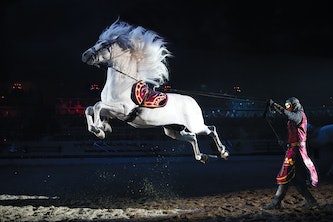
Horseback Riding Legends and Myths from Medieval Times
Pegasus: The Winged Horse
Pegasus, the winged horse of Greek mythology, is one of the most famous horseback riding legends. According to myth, Pegasus was born from the blood of the Gorgon Medusa when she was slain by the hero Perseus.
Pegasus was known for his ability to fly, making him a symbol of freedom and transcendence. He carried various heroes, including Bellerophon, who rode the winged horse into battle against the Chimera. Pegasus continues to be a beloved figure in art, literature, and popular culture, representing power, grace, and the possibility of reaching new heights.
The Legend of the Unicorn
The unicorn is a mythical creature that has captivated imaginations for centuries. In medieval times, it was believed that the unicorn could only be tamed and ridden by a virgin of pure heart.
The unicorn was often depicted as a horse with a single horn protruding from its forehead. It was said to possess magical powers and to be able to heal sickness and detect poison. The legend of the unicorn, with its association with purity and grace, has fascinated people throughout history and remains a symbol of beauty and untamed magnificence.
The Horse of Troy
The Horse of Troy is a legendary figure from the Trojan War, as described in Homer’s epic poem, the Iliad. According to the myth, the Greeks devised a plan to infiltrate the city of Troy by building a giant wooden horse and hiding soldiers inside.
The Horse of Troy, also known as the Trojan Horse, was presented to the Trojans as a gift and brought within the city walls. Under the cover of darkness, the Greek warriors emerged from the horse and laid siege to Troy, leading to the fall of the city. The Horse of Troy has become a symbol of deception and cunning throughout history and serves as a cautionary tale of the consequences of misplaced trust.
Horses in Medieval Art and Literature
Illuminated manuscripts and horse illustrations
Illuminated manuscripts from medieval times often featured intricate and detailed illustrations of horses. These artworks provided a visual representation of the importance of horses in medieval society and served as a testament to their beauty and power.
Horse illustrations in illuminated manuscripts depicted various scenes, such as knights in battle, jousting tournaments, and hunting expeditions. These illustrations showcased the accuracy and skill of the artists, as well as the cultural significance of horses in medieval life.
Medieval tapestries featuring horses
Medieval tapestries were another form of art that often showcased horses. These large textiles depicted elaborate scenes from daily life, mythology, and historical events.
Horses featured prominently in many of these tapestries, often conveying a sense of movement, power, and regal elegance. Scenes depicting knights on horseback, hunting parties, and battlefields were intricately woven into the fabric, capturing the imagination and admiration of viewers.
Horse symbolism in medieval literature
Horses held symbolic meanings in medieval literature, representing various virtues, concepts, and ideas. They often embodied qualities such as strength, loyalty, nobility, and decisiveness.
In epics such as the Arthurian legends, horses were associated with knighthood and chivalry. Characters’ choice of horse and their interactions with them reflected their personality and moral character. Horses were also used as metaphors for emotions, such as passion, longing, and freedom, adding depth and symbolism to medieval literary works.
Horses in medieval art and literature served not only as physical representations of the animal but also as vehicles for conveying deeper meanings, capturing the essence of the medieval worldview and the profound connection between humans and horses.
In conclusion, horseback riding has a rich and storied history that intertwines with the medieval period. From the origins of horseback riding to the roles of horses in medieval times, the relationship between humans and horses has shaped societies, influenced culture, and contributed to the development of equestrian sports and traditions that continue to this day. Whether it is the partnership between noble knights and their trusted steeds, the thrill of competitions, or the mythology and symbolism surrounding horses, the allure of horseback riding resonates throughout time.
